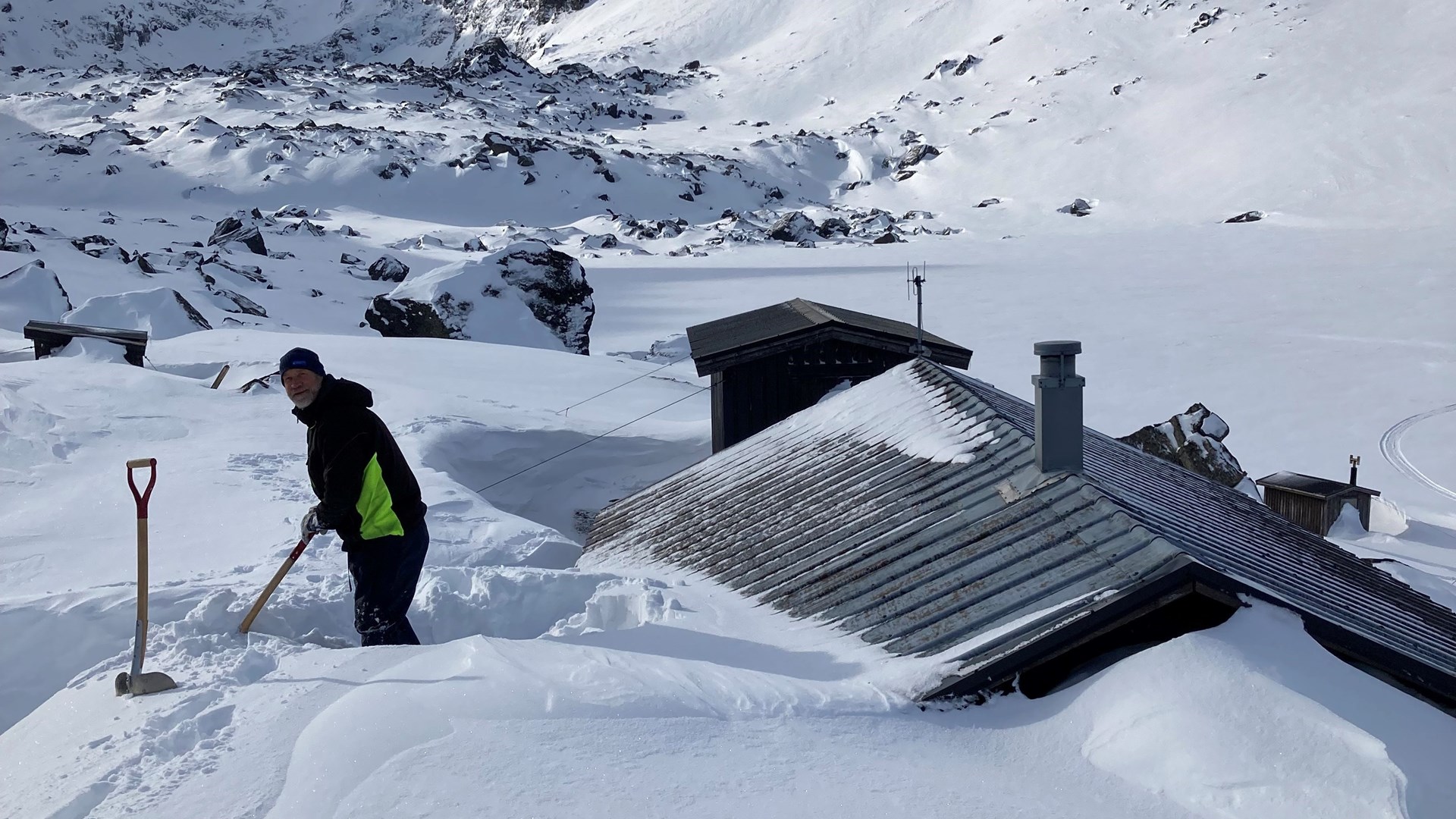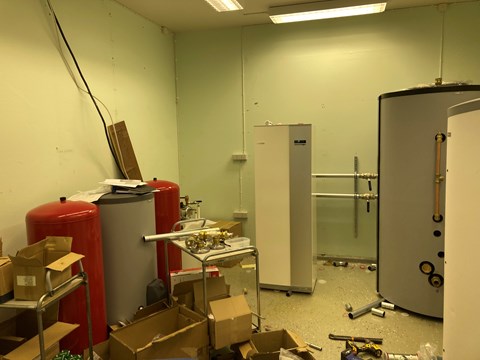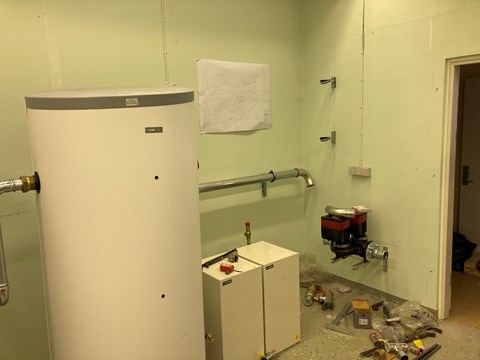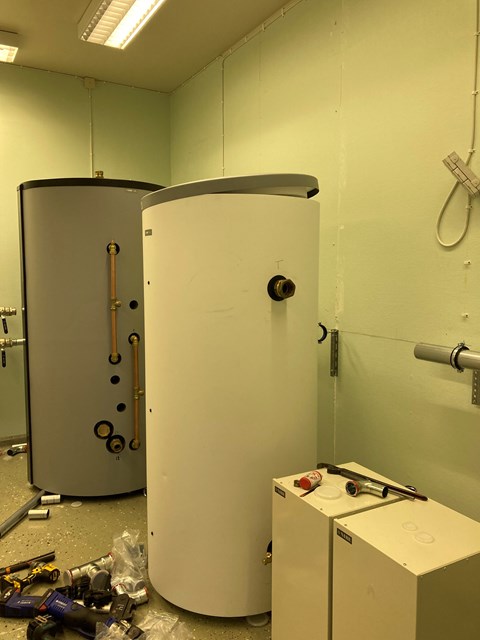Abisko Scientific Research Station prepares for the field season
 Svante Zachrisson is shovelling to get into Kärkevagge cabin. Photo: Thomas Westin.
Svante Zachrisson is shovelling to get into Kärkevagge cabin. Photo: Thomas Westin.
In March, it is still low season at Abisko Scientific Research Station. About ten researchers have been on-site during the winter, but the number gradually increases during the spring.
In May, some larger groups arrive as the field season begins in earnest. They will be at the station all summer, and it looks like there will be another intense field season.
Work is underway to replace the heating system from direct electricity to geothermal heating. In the summer, three 550-meter-deep holes will be drilled from which the energy will be taken. The goal is for all indoor work to be completed by 31 March. In total, 1,900 square meters of laboratories and offices are affected in the main building. New pipes are laid into each space, and around 200 radiators are installed on three floors.
At this time of year, propane and other supplies are transported by snowmobile to the five field huts: the Mire villa in Stordalen, Latnjajaure, Kärkevagge, Jieprenkiedde, and Lullihatjårro. The transports are made by snowmobile during the winter to avoid helicopter transport during the summer. Some shovelling is required to get into the cabins.




